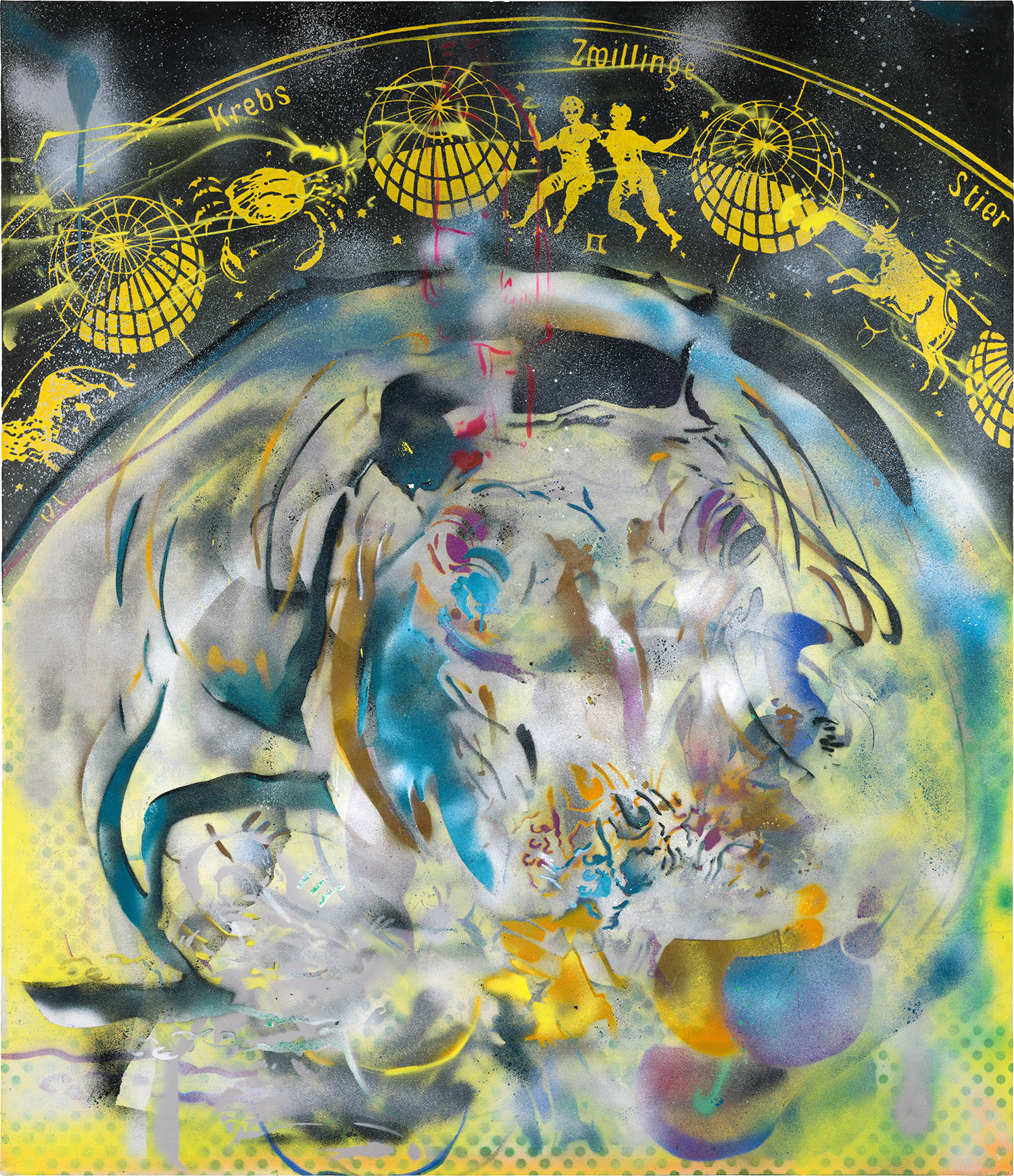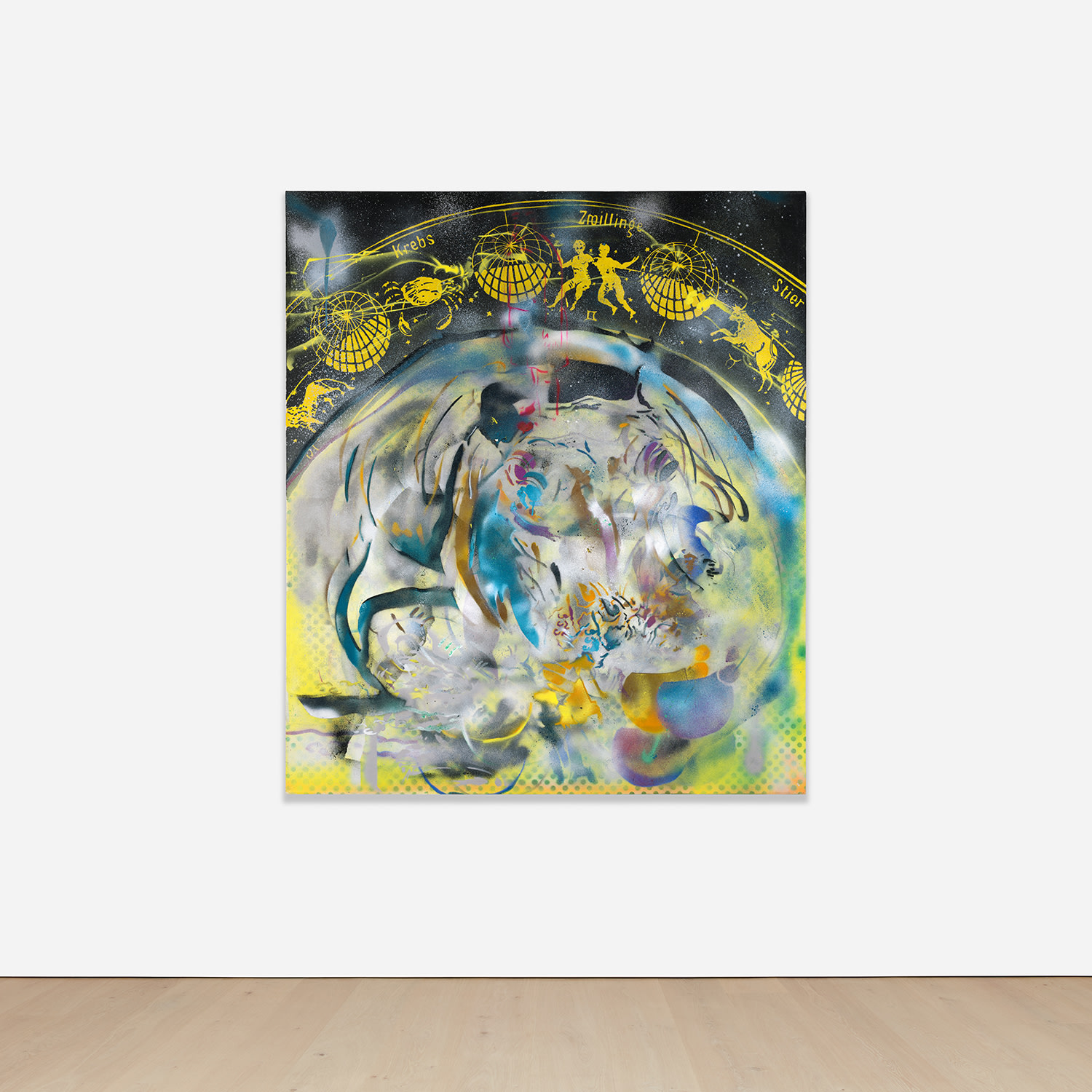



Property of an Important Private German Collection
10Ο
Sigmar Polke
Silberner Zwilling
signed and dated ‘S. Polke 1975’ on the reverse
acrylic and spraypaint on canvas
150 x 130 cm (59 x 51 1/8 in.)
Painted in 1975.
We are grateful to Michael Trier for the information he has kindly provided.
We are grateful to Michael Trier for the information he has kindly provided.